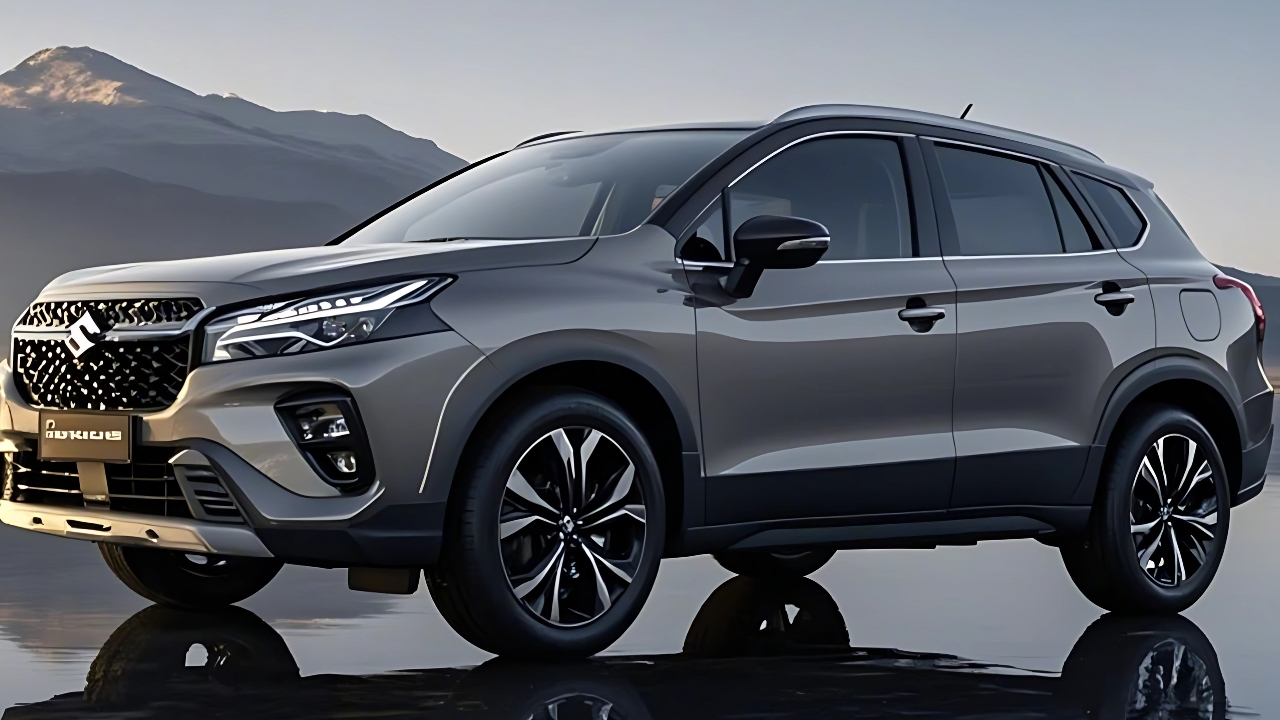The Suzuki S-Cross finds itself in an uncomfortable position. Despite being described as a “quiet achiever” with surprising qualities, it’s struggling to gain traction in the competitive small SUV market, with historically low sales figures that don’t fully reflect its capabilities. But what’s really going on with this overlooked crossover?
The Sales Reality Check
The S-Cross has been one of the bigger contributors to Suzuki’s European recovery alongside the Vitara, yet it operates in the shadow of its more stylish sibling. The numbers tell a concerning story – Suzuki has had to revise its global sales forecast downward, reducing expected figures by 9,000 units to 3.24 million units, reflecting broader challenges across their lineup.
In markets like Australia, the S-Cross AllGrip Prestige sits at $44,490 driveaway, making it technically the priciest Suzuki money can currently buy – dangerous territory when competitors like the MG ZS top out under $40K. This pricing pressure isn’t helping its case in an increasingly crowded field.
Why the S-Cross Struggles to Shine
The fundamental issue isn’t quality – it’s perception and market positioning. The S-Cross occupies the space that Korean brands like Hyundai and Kia used to inhabit in the early 2000s: sensible, reliable, but lacking the style and allure that today’s buyers expect. While competitors have embraced “big wheels and dazzling LEDs,” Suzuki has stuck to utilitarian pragmatism.
Rivals like the Peugeot 3008 and Hyundai Tucson have proved that aesthetic bravado can go far in the crowded crossover segment, something the S-Cross hasn’t quite achieved. The design, while improved over previous generations, still falls short of creating that emotional connection buyers seek in their SUVs.
The internal competition doesn’t help either. Suzuki makes effectively the same car in a much more palatable suit – the Vitara – and sells it a little cheaper too. This creates confusion in the marketplace about which Suzuki SUV to choose, potentially cannibalizing sales from both models.
What the S-Cross Actually Delivers
Here’s where things get interesting – the S-Cross actually excels in areas that matter to real-world users. With 430 litres of boot space, it stacks up favorably against competitors like the Skoda Kamiq (400 litres) or Toyota Yaris Cross (397 litres), though larger SUVs at similar prices do offer more.
The driving experience surprises many. The Boosterjet engine provides perky performance with 220Nm peak torque coming from a low 1500rpm, creating unstressed progress helped by the vehicle’s light kerb weight. The 1.4-litre turbocharged petrol with mild-hybrid technology offers enough performance for everything from city driving to motorway merging.
Practicality remains a strong suit. Every S-Cross comes with an extensive kit list including heated front seats, keyless entry, LED headlights and comprehensive safety features. Suzuki covers the S-Cross with a five-year/unlimited-kilometre warranty and capped-price servicing at 12-month/10,000km intervals.
The Hybrid Dilemma
Suzuki offers two hybrid approaches, but neither seems to be hitting the sweet spot. The mild hybrid officially returns 53.2mpg while the full hybrid claims 47.8mpg, but in practice, the mild hybrid can easily achieve over 50mpg while the full hybrid struggles to reach 40mpg.
The full hybrid system represents a letdown – it doesn’t make a big enough leap forward in fuel economy to justify the £1,000-odd price increase, and it slashes boot space to less than 300 litres. This creates another point of confusion for potential buyers trying to understand which variant offers the best value.
Future Uncertainty
The broader automotive landscape shift toward electrification poses challenges for the S-Cross’s future. Industry experts note that there’s little more to extract from petrol engine technology, and it simply isn’t worth developing even more eco-friendly petrol engines to meet tightening emissions regulations.
Meanwhile, EVs represented only 2% of India’s automotive market in 2023 but showed 91% year-over-year growth, forcing Suzuki to focus on compact EV development. This transition period creates uncertainty about how long traditionally-powered models like the S-Cross will remain relevant.
The timing couldn’t be more challenging. Following the death of longtime leader Osamu Suzuki in December 2024, the company faces questions about its ability to navigate changing market conditions, particularly in crucial markets like India where it has historically dominated.
What This Means for Buyers
For consumers considering the S-Cross, the current situation creates both opportunities and concerns. If you want a car that’s economical, well-equipped and affordable, the S-Cross ticks many boxes, though most families might be better served by more fashionable alternatives like the Peugeot 3008 or more practical options like the Nissan Qashqai.
The S-Cross works best for buyers who prioritize substance over style and value proven reliability over cutting-edge features. There’s an overall Toyota-like demeanor that feels well-balanced, adequately swift, and fairly quiet on-road – essentially inoffensive in all the right ways.
However, potential buyers should consider the model’s uncertain future. With Suzuki planning to unveil a new mid-term strategy in early 2025, significant changes could be coming to their SUV lineup. This might mean the current S-Cross represents the end of an era rather than the beginning of a new chapter.
Suzuki S-Cross
The S-Cross’s sales struggles aren’t due to fundamental flaws but rather a mismatch between what it offers and what today’s market demands. In an age where SUV buyers want style, technology, and brand cachet, the S-Cross delivers reliability, practicality, and value – qualities that are increasingly harder to market effectively.
Whether Suzuki can reinvent the S-Cross for changing times remains to be seen. For now, it remains a competent choice for pragmatic buyers, even if it’s not the exciting option that drives showroom traffic. The question isn’t whether the S-Cross is a good vehicle – it is – but whether there’s still a place for this type of sensible, unpretentious SUV in tomorrow’s automotive landscape.
ALSO READ: 2025 Audi S5 Avant: Turbocharged Elegance on Wheels Review
